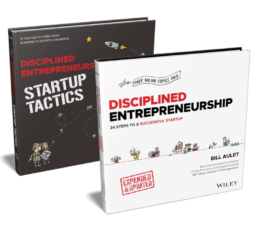Republished from Ewing Marion Kauffman Foundation.
Not all startup companies are created equal. Although both innovation-driven enterprises (IDEs) and traditional small- and medium-sized enterprises (SMEs) can provide valuable products and services and create jobs, IDEs – startups focused on addressing global markets based on technological, process or business model innovation – can potentially create hundreds or even thousands of high-skill jobs if they succeed.
The distinctive differences between these two forms of entrepreneurial ventures – and their importance for governments and policymakers wanting to support long-term economic growth – is the subject of a new paper released today by the Kauffman Foundation. “A Tale of Two Entrepreneurs: Understanding Differences in the Types of Entrepreneurship in the Economy,” examines IDEs and SMEs, their roles in local, regional and global economies, and their differing needs in terms of financial and policy support.
While traditional SMEs don’t require an innovative product, process or business model to succeed, IDEs are based on building competitive advantage through innovation on one or more of these dimensions.
For this reason, IDEs are more likely to be founded by teams of individuals with diverse skills and often higher levels of education than SME founders. SMEs focus on local or regional markets and create “non-tradable” jobs, whereas IDEs consciously pursue global markets and create jobs that can be performed in different locations. Funding sources also differ: SMEs tend to be individual or family owned with little outside investment, while IDEs have a diverse ownership base with external investors.
Because of their global aspirations and the criticality of both capital investment and competitive advantage, IDE entrepreneurs face much greater risk than SMEs – but the payoff can be much greater. Unlike SMEs, which typically grow in a linear fashion, IDEs tend to start out losing money but achieve exponential growth if successful. Government policies and programs, however, tend to favor SMEs, which often produce faster, more visible results – an approach that may undermine the success of potential new IDEs. [more…]
The author
Bill Aulet
A longtime successful entrepreneur, Bill is the Managing Director of the Martin Trust Center for MIT Entrepreneurship and Professor of the Practice at the MIT Sloan School of Management. He is changing the way entrepreneurship is understood, taught, and practiced around the world.

The Disciplined Entrepreneurship Toolbox
Stay ahead by using the 24 steps together with your team, mentors, and investors.
The books
This methodology with 24 steps and 15 tactics was created at MIT to help you translate your technology or idea into innovative new products. The books were designed for first-time and repeat entrepreneurs so that they can build great ventures.

How relevant was this article to you?
Click on a star to rate it!
Average rating 5 / 5. Vote count: 1
No votes so far! Be the first to rate this post.
We are sorry that this article was not useful for you!
Let us improve this post!
Tell us how we can improve this post?
